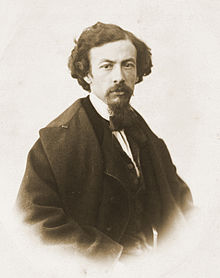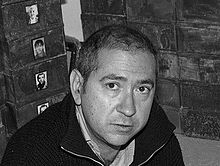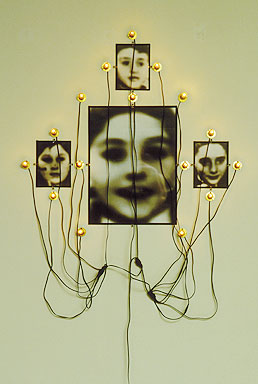Thursday, March 31, 2011
Tuesday, March 29, 2011
Historical Photographer Presentation: Gustave Le Gray

A French photographer (originally a painter) born in 1820, died in 1884. During his time photography was still a new medium for artists to work with. He is known for his innovations and teaching of the medium.
He was of a few elite photographers hired by the French government to document French buildings and architecture in the 1850s. At the same time he also helped to found the Societe Heliographique, which was the first photographic organization in the world.
His most famous works are those of French monuments and buildings, portraits, and seascapes such as the images below.



Semi-Contemporary Photographer Presentation: Arthur Tress
 Arthur Tress is an American photographer born in 1940. He began taking photographs when he was just 12 years old. He attended Bard College where he received his B.F.A. Then he moved to Paris to attend film school. Between 1962 and 1966 Tress traveled various continents and countries, documenting the cultures and customs he encountered along the way.
Arthur Tress is an American photographer born in 1940. He began taking photographs when he was just 12 years old. He attended Bard College where he received his B.F.A. Then he moved to Paris to attend film school. Between 1962 and 1966 Tress traveled various continents and countries, documenting the cultures and customs he encountered along the way. 




Assignment 004 - Popular Media/Culture

Image 002 - TV Still/Advertisement


Image 003 - Stock Photography

Sunday, March 27, 2011
Blog Prompt #23
1. In what ways do you “construct” your identity? In what ways do you “perform” in your daily life?
I construct my identity first and foremost based on how I was raised and where I grew up. This is the biggest influence over who I am because my childhood so concretely shapes the type of person I am/want to be. College has also helped me to grow as a person and realize what aspects of my childhood I do not want to carry in to my future. I 'perform' how I would like people to perceive of my character.
2. Describe some ways in which your personal culture and social environments are "constructed".
I feel that college life and the social norms versus abnormalities are constructed to form an ideal image that isn't really possible for anyone to live up to. For example, in movies we are shown images of 'perfect looking' men and women that are popular, rich, and like to party. I feel that many people on MSU's campus try to fit themselves in to this stereotypical sorority/fraternity girl/guy role when in actuality, I think it would be safe to say that college students as a whole are scrambling for everything they have, money, good grades, and free time to 'party'.
3. Describe some ways in which your physical environment/space is “constructed”.
In my opinion, a majority of the space that I occupy is constructed. Not only are the physical buildings obviously constructed, but the environments we put ourselves in. The environment expected and therefore created at a party is very different from the environment expected and created in a classroom. We create "space", whether is be physical or more figurative, based on the activity in which we are partaking.
4. In your daily life, what would you consider to be “real” and what would you consider to be “constructed/fabricated”?
I consider the human race to be "real". Whether we choose to or not, we are all existing in the same space. When you start to break down the population further than that is when you start to enter the realm of constructed or fabricated things. Ie. When you say you live in a certain country, state, city, neighborhood. Or when you identify yourself as a member of a certain religious community, a student of a certain school, etc.
5. Describe a narrative tableaux that you might create to be captured by a photograph. A narrative tableaux can be defined as “Several human actors play out scenes from everyday life, history, myth or the fantasy of the direction artist” ( Constructed Realities: The Art of Staged Photography Edited by Michael Kohler , 34).
In order to create a narrative tableaux to follow the theme of constructed reality, I would compose a scene that you would see in everyday life such as the typical grocery store. Each person would have a different part to play that fell in to one of the stereotypical roles that you would see if you were shopping at a grocery store.
6. Describe an idea for a photograph that includes a miniature stage of still life. A description of such an image is "The tableaux reconstructs events as in the narrative tableaux, but in miniaturized format, using dolls and other toy objects" (Kohler, 34).
Sunday, March 20, 2011
Blog Prompt #22
Friday, March 11, 2011
Recreation 004


Semi-Contemporary Photographer Presentation - Christian Boltanski
 Christian Boltanski is a French born artist working in many different mediums including photography, sculpture, painting, and installations. He was born in Paris in 1944. His artwork is most recognized for its themes of death/loss and memory. His work serves as as sort of memorial for the anonymous/those that have seemed to disappear. His artwork often includes more than one medium, ie. an installation including sculptural work as well as photographs. Below are some examples of some of his unique installations. They are often dark and somewhat disturbing, but intriguing at the same time.
Christian Boltanski is a French born artist working in many different mediums including photography, sculpture, painting, and installations. He was born in Paris in 1944. His artwork is most recognized for its themes of death/loss and memory. His work serves as as sort of memorial for the anonymous/those that have seemed to disappear. His artwork often includes more than one medium, ie. an installation including sculptural work as well as photographs. Below are some examples of some of his unique installations. They are often dark and somewhat disturbing, but intriguing at the same time.



Historical Photographer Presentation - Eddie Adams
 Eddie Adams, Saigon Execution, 1 February 1968
Eddie Adams, Saigon Execution, 1 February 1968


